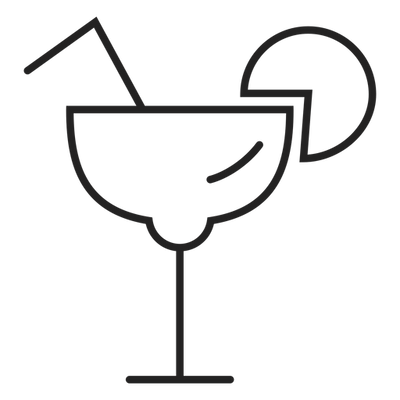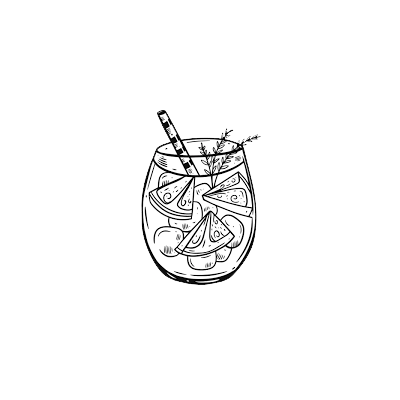The perfect wine only feels memorable when served in a really good wine glass. Connoisseurs, sommeliers, and casual drinkers can all disagree about wine. Still, there's a corresponding glass for every kind of wine, and the possible choices are a bit overwhelming because of their diversity. Simply put, it is an intervention on the types of wine glasses and how you will expect each glass to accommodate the taste, aroma, and general experience of your favorite wines.
Why is the right wine glass so important?
First, clear space for some generalities before really going specific on the wine glasses on certain types. If you understand why your glass shape and size affect your wine experience, I thought you would appreciate that art in making it because it is just as beautiful as a wine glass, for instance, which takes note of the nature of wines-from color to aroma and taste. When the curve and shape influence the moment when that bouquet begins flooding your nose, where the wine touches your palate first and just how much air makes contact with the wine-all these can transform the drinking experience.
Kinds of Wine Glasses and Usage
Below is the list of the best-known kinds of wine glasses and what makes them unique.
- Red wine glasses
Red wines are generally more full-bodied and full of more malleable and intense flavors. Thus, the red wine glasses tend to be larger and broader, serving more exposure to air and concentrating the complex scents of the wine better. Amongst the most celebrated varieties of red wine glasses are:
- Bordeaux Glass: Bordeaux glasses are taller bowls, and their opening is just a little narrower than the other red wine glass varieties. They can cope well with big-bodied red wines like Cabernet Sauvignon, Merlot, and Syrah. It provides sufficient oxygen flow that may soften the tannins of those wines and unleash more concentration in rich flavorings.
- Burgundy Glass: Though with the same broad bowl and relatively short stem as that of Bordeaux glasses, its shape is honed for more delicate red wines to be savored in glass. This wine style includes Pinot Noir. The smallest possible ratio gives the wine aerate quickly, which will make the subtle floral and fruity aromas that the wine unleashes manifest in its flavor.
- Uses of Wine Glass: Red wine glasses improve the possibilities of full-bodied complex wines. These glasses prepare perfectly with the accompanying tasting experience by letting the wine breathe and expressing its boisterous aromas.
- White Wine Glass
White wines, on the whole, are smaller and more slender than reds, with floral and fruity notes. This also means that the glasses for white wines should be small and slender to preserve the wine's crisp feeling and, above all, avoid warming it too fast in your hand.
- Sauvignon Blanc Glass: This tall and slender bowled glass preserves the wine's barely noticeable floral and citrus aromas. Suitable for light whites like Sauvignon Blanc, Pinot Grigio, and Chenin Blanc, the glass keeps the wine chilled for a long period.
- Chardonnay Glass: Their bowls are a bit wider, making Chardonnay glasses the perfect glass to accompany rich, full-bodied whites like Chardonnay and Viognier. The more extensive bowl lets the wine breathe more, maximizing the creamy buttery flavors typical of these wines.
Glass Usage White wine glasses keep the temperature and fragrant aromas of wine, making it crisp and refreshing.
- Sparkling Wine Glasses
Bubbly products like Champagne or Prosecco talk about features like bubbles and effervescence. Certain champagne glasses exist solely to hold carbonation and present classy releases of tiny bubbles upwards in streams.
The most iconic glass for sparkling wines is the flute. It is tall and narrow, so it holds carbonation because the exposed area to the air is minimal. It keeps the bubbles rising upwards and provides a great visual effect, keeping the wine bubbly for longer.
- Tulip Glass: Tulip glasses are curved more near the rim for the flute; hence, they are excellent for any type of sparkling wine in that they trap all the aromas while still holding the bubbles. Plus, this glass shape has more volume for swirling which involves letting go of the wine's tiny flavors.
- Applications of Wine Glass: Sparkling wine glasses emphasize bubbles and aromas, together with the retention of carbonation and effervescence of wine.
- Rosé Wine Glass
Most styles of Rosé wines are light and crisp but can be fruity or robust. A rosé wine glass will most likely be designed to bring out fruity aromas and deliver a refreshing tasting experience.
- Rosé Glass: The rosé glass is usually shorter than the red wine glass, and its shape tends to taper down to the rim on the side. This keeps the fresh fruity aroma concentrated while not compromising crispness.
- Stemless Rosé Glass: To enjoy its casual and modern style, one would adore to drink his rosé in a stemless glass. The wine will still convey its color and aroma, but it is the perfect kind of socializing rather than formal tasting.
- Uses of Wine Glass: Rosés glasses improve the freshness and fruity flavors of wine for informal sipping or lighter dishes.
- Desert Wine Glasses
Dessert wines, such as Port, Sherry, and Moscato, are rich in flavor and sweetness. A dessert wine glass is smaller and narrower at the top to concentrate the wine's sweetness and aroma.
- Port Glass: This glass has a relatively short and small bowl. It is perfect for sipping rich, sweet dessert wines. The narrow opening again minimizes oxidation, thereby keeping the taste of wines abound.
- Sherry Wine Glass: A sherry wine glass is almost identical to a port wine glass, but it has a slightly larger bowl to increase swirling with each turn of the wine, thereby drawing out complex aromas.
- Using Wine Glasses: Dessert wine glasses help concentrate rich, sweet flavors and aromas. They are excellent for sipping wine after dinner.
Stems vs Stemless Wine Glasses
Although regular wine glasses are also fitted with a stem, nowadays, stemless glasses are extremely commonly used for daily purposes. Stemless wine glasses are simply easy to hold and best for outdoor events; however, they have an ultimate flaw: They heat up faster due to body heat. So, if you're holding that glass in your hands and sipping slowly, especially whites and rosés, then it's better to choose stemmed ones.
Selecting the Right Wine Glass Set
You may not want to begin with an investment in a glass for every different kind of wine. However, even a minimalist set-one with a red wine universal glass, a white wine glass, and a Champagne flute -will take you through most occasions and heighten the pleasure with which you drink wine without using too much space.
Adding glasses specific to the type, such as the Burgundy glass or Chardonnay glass, makes certain wine tastings more exciting. The end result is not making wine drinking a big deal but rendering tools that ensure that one gets the best from every sip.
Final Word
Beautiful wine glasses are more than just pretty glasses. Wine glasses extract the best smells, tastes, and pleasure from vast quantities of wine. You're an occasional drinker or a connoisseur- this is just another appreciation for wine.
The next time you pour that glass, try one of these wine glasses designed for your type of wine and see just how it can change the experience. Cheers to savoring every sip!














